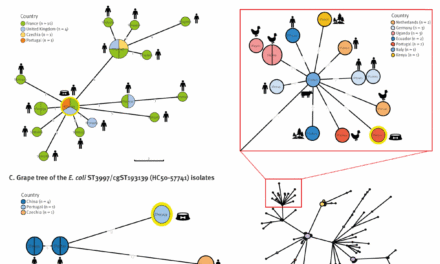Scientists from the Quadram Institute and UK Health Security Agency have made a concerning discovery regarding the persistence of bacterial populations on factory floors in ready-to-eat food production facilities, despite rigorous cleaning efforts.
The revelation comes in the wake of a tragic listeria outbreak in 2019 that claimed the lives of six individuals in the UK. In response to this public health crisis, researchers have intensified efforts to understand how pathogens such as Listeria monocytogenes can persist in environments where ready-to-eat foods are prepared.
Listeria monocytogenes, the culprit behind the outbreak, is a foodborne bacterium notorious for causing listeriosis—an illness with potentially fatal consequences, particularly for vulnerable populations such as pregnant individuals, the elderly, and those with weakened immune systems.
The safety of ready-to-eat foods is paramount, yet despite stringent disinfection protocols, pathogens like Listeria can evade control measures and contaminate food products. Unlike foods that undergo cooking before consumption, ready-to-eat foods provide no opportunity for consumers to eliminate harmful bacteria through heat treatment, heightening the risk of infection.
To unravel the mystery of bacterial persistence in food production environments, researchers embarked on a comprehensive study, focusing on the microbial communities coexisting with L. monocytogenes on factory floors. Sampling different areas of a ready-to-eat food facility over ten weeks, both before and after cleaning, researchers analyzed bacterial populations using culture and genetic analysis techniques.
The results revealed a troubling trend: despite cleaning efforts, bacterial populations remained stable over time, with L. monocytogenes supported by a resilient community of other bacteria. Maria Diaz from the Quadram Institute, lead researcher of the study, explains, “Our findings suggest that we may need to develop new strategies to alter the entire bacterial population to effectively eliminate the pathogen.”
While cleaning efforts did reduce bacterial numbers and lower the risk of cross-contamination, significant differences were observed between different areas of the factory at varying temperatures. This suggests that bacterial populations are finely attuned to the diverse environments within the facility, indicating established populations rather than external introductions.
Although the factory had listeria under control at the time of sampling, this research sheds light on the complex microbial dynamics within ready-to-eat food facilities. By understanding how listeria persists in these environments, researchers aim to develop more effective cleaning methods and laboratory testing protocols to safeguard food safety.
Maria Diaz will present her groundbreaking findings at the upcoming Microbiology Society Annual Conference, offering valuable insights into Listeria monocytogenes persistence and its implications for food safety practices.
For more information on the study and its implications, stay tuned for updates from the conference on April 11th.











